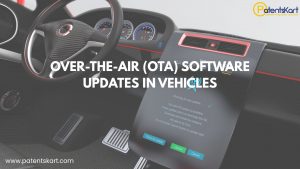What is HR analytics and how important is it?
Human Resource Managers- the ones known for keeping the dynamics, of a person and amongst people, healthy and efficiently functioning, so that organizational goals are achieved. Traditional Human Resource Management is known for its innate talent to understand people and their intricacies, and intuitively figure out how the person in question, will impact the productivity and profits of an organization. HR Analytics is exactly about shattering this traditional viewpoint pertaining to how the HRM of an organization functions.
HR Analytics involves the usage of data to analyze patterns and correlations to develop insights and make predictions that serve to identify what would work when it comes to having the right human resources for an organization. Just like general analytics, HR analytics strives to prepare models based on the analyzed data to prepare algorithms that can predict future outcomes based on the manipulation of factors involved in the model (Predictive Analytics).
How can HR analytics be used?
HR analytics can be leveraged in all HR functions in myriad ways. For example, your organization is observing an increased employee turnover rate. The resignation of a single employee costs a lot to the organization. Studies estimate that the cost to replace an employee can reach 200% of the cost to have the former employee working. This cost is attributed to, factors such as training requirements, recruiting costs, costs incurred due to a loss in productivity and loss of morale amongst team members, etc.
To find out the reason behind the increasing attrition rate using HR analytics, the HR manager will thus have to observe if there is a correlation between, organizational practices and employee characteristics. The correlation studies will require data such as current attrition rate, similarity in employee characteristics with longer tenure, similarity in employee characteristics with shorter tenure, responses from surveys by current employees, performance data, organizational practices such as type of onboarding experience, and appraisal mechanisms. Having a data-driven approach gives a credible insight that can be used to make future decisions, which strategically align with organizational goals, thus making HRM strategic partners to the organization.
Other examples of its application:
- Understanding factors affecting employee performance.
- Increasing recruiting efficacy via understanding which factors contribute to metrics such as Time to Fill, Time to Hire, Cost per Hire, Source of Hire, Selection Ratio, First Year Turnover Rate, etc.
- Anticipate future human resource needs.
- To understand which compensation system works and which does not.
Popular job titles or opportunities about the use of analytics in HR include HR Analyst, HR Information System Analyst, HR Data Scientist, Corporate HR managing workforce analytics, and Talent Analytics Manager. Tools for analytics such as statistical programming languages (R) and programming languages for automation (Python) are molded to create HR Information System solutions and analytics platforms.
Challenges faced when implementing HR analytics:
- Lack of skills to gather, process and interpret the required data.
- Lack of data quality or lack of understanding towards knowing which is the right data to be processed.
- Inability to manage data privacy.
- Linking insights to actions for increased ROI.
- Lack of understanding amongst executive leaders towards the importance of adapting analytics in HRM processes.
What does the future hold for HR Analysts:
An amalgam of AI and HR Analytics in HR functions is a popular idea these days. Hence, we can expect that in the future, the resultant coalition will aid in the following:
- A personalized employee onboarding experience: Having the right employee onboarding experience plays a huge role in making an employee feel valued and secure. This directly affects morale. Integration of psychology and AI will help understand the type of onboarding experience a recruit needs to be provided with. It can also help ease and automate general onboarding procedures such as interaction with other employees and understanding their functions in the organization.
- Application of cognitive analytics, towards tasks such as leave management, performance management, appraisal management, coordination between departments, etc.; which not only will result in the automation of these tasks but also remove biasedness when making decisions. Humans are bound to be biased sometimes, owing to various factors affecting one’s psychology, and hence the integration of AI in decision-making will lead HR Managers to make the most effective and strategic decisions.
- Neuro-Linguistic Programming (NLP)to monitor employee morale by analyzing voice characteristics and behavior. Keystrokes and internet usage will also be monitored to predict if an employee is planning on leaving the organization.
- Using predictive and cognitive analytics to determine the right fit for a job by understanding the personality traits of probable recruits.
HR analytics has provoked organizations in understanding that human resource management needs to be looked upon as a vital strategic partner. With disruptive technologies shaping trends and practices, analytics make human resource management all the more essential to an organization’s need to continuously evolve.







